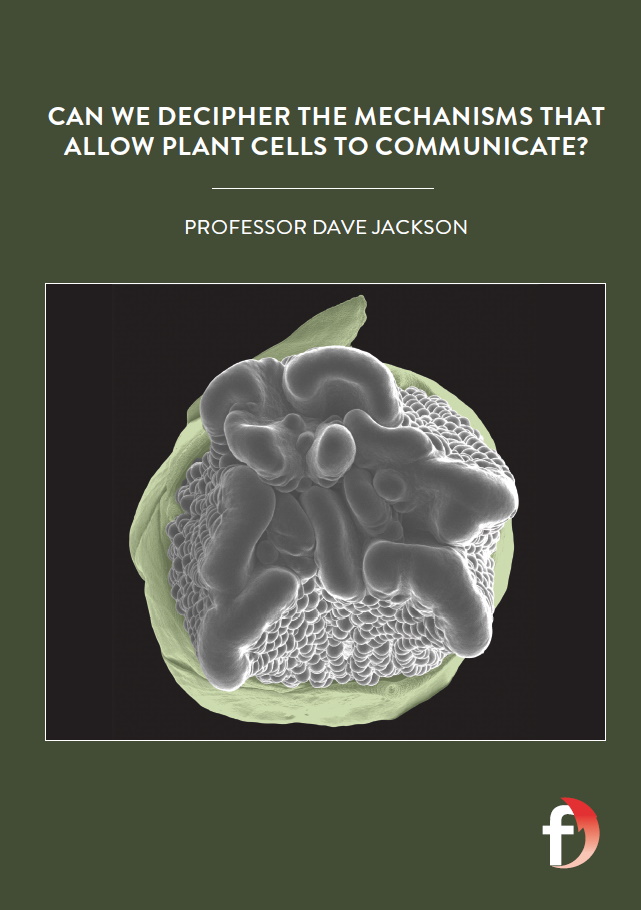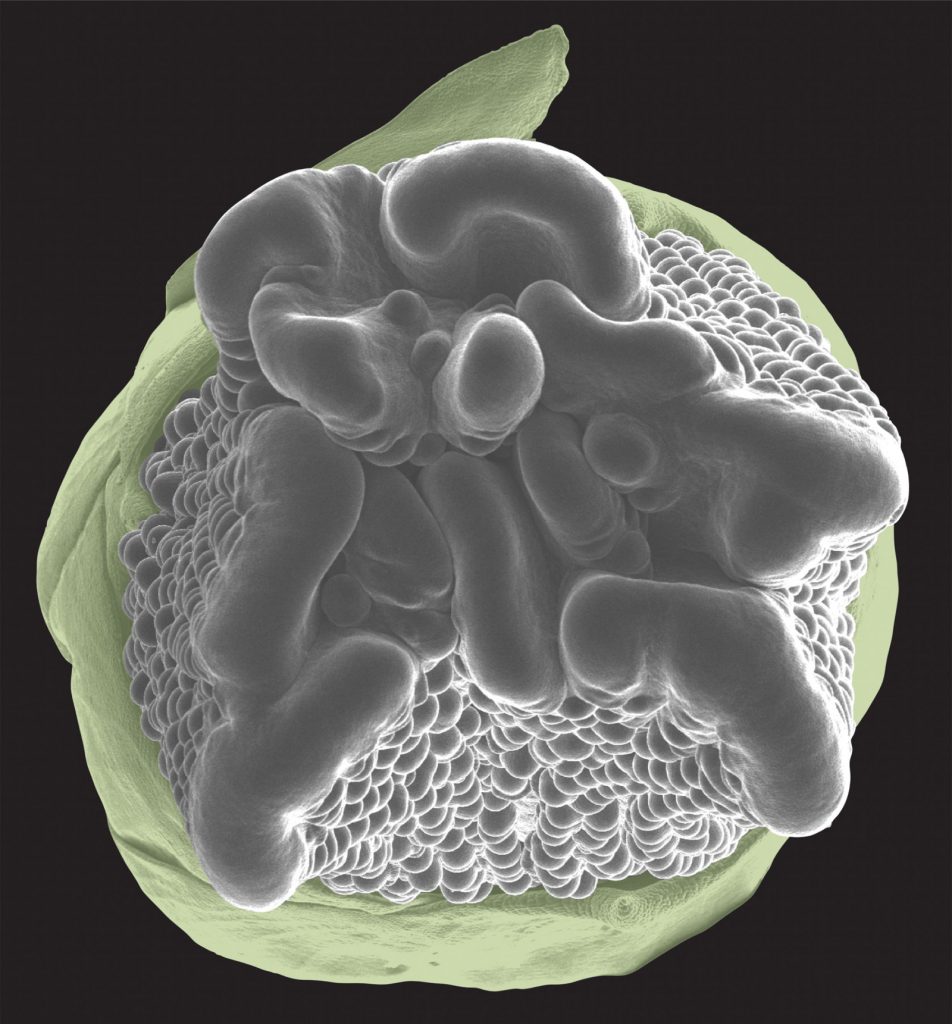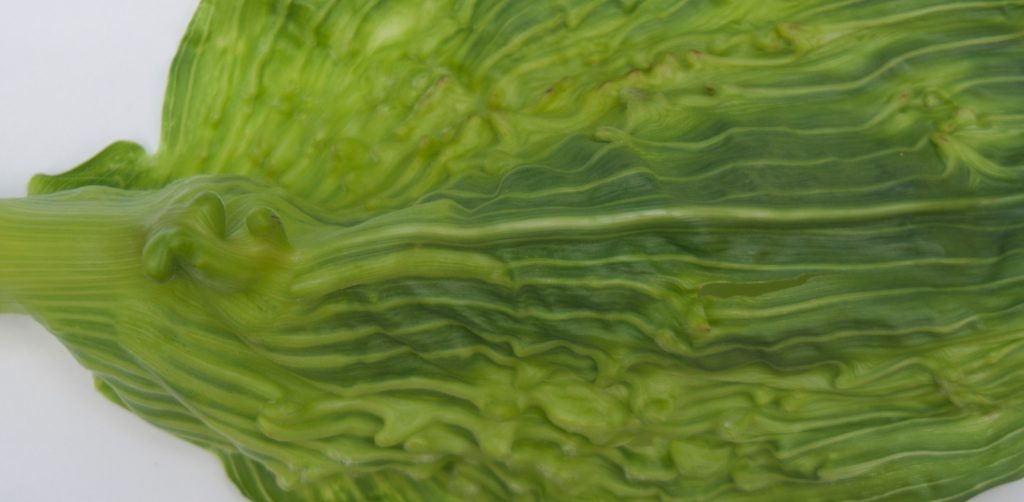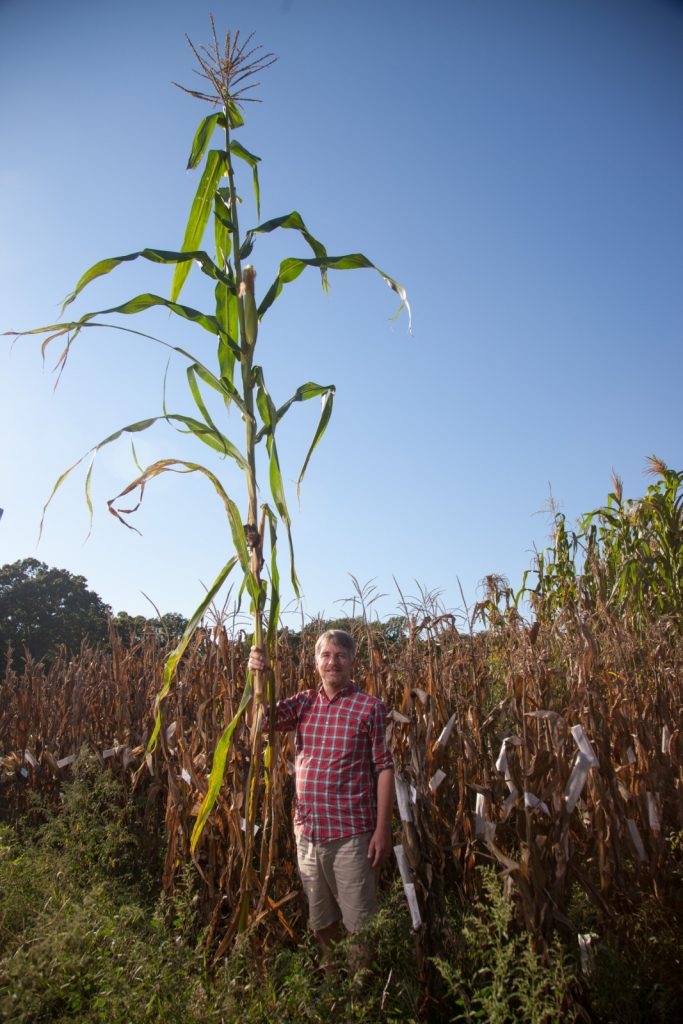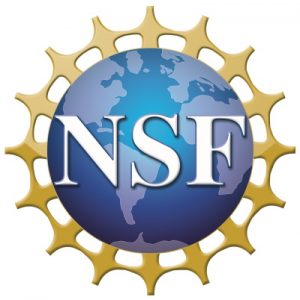Can we decipher the mechanisms that allow plant cells to communicate?
Humans depend on plants for their survival. Plants provide the oxygen we breathe and the food we eat, but much of their functioning remains a mystery to us. At Professor Dave Jackson’s lab at Cold Spring Harbor Laboratory (CSHL) in New York, USA, scientists are studying the mechanisms that co-ordinate plant development. They have recently identified an important protein that facilitates the communication underlying this process
TALK LIKE A PLANT BIOLOGIST
PLASMODESMATA – tiny channels that connect adjacent plant cells to each other
CHAPERONE – a molecule that helps large molecules un-fold so that they can move through plasmodesmata
STEM CELLS – undifferentiated cells that have the ability to develop into all types of plant cells. They are crucial to the plant’s growth and development
mRNA – a type of nucleic acid that transmits the information from DNA into making proteins
RNA BINDING PROTEIN – proteins that bind to RNA molecules and help them, among other things, to move around and between cells
KNOTTED1 – a gene found in plants that gives stem cells their special functions and is vital for a plant’s growth and development
Communication between cells is a vital process for all multi-cellular organisms, and plants are no exception. In plants, this communication is particularly important during the development stage, when stem cells differentiate into all of the cells that an adult plant needs. Communication allows each cell to know which kind of cell it needs to become. Even when the plant is fully grown, its cells still need to be able to ‘talk’ to each other. They share information to co-ordinate the plant’s responses to changes in light and temperature, and to protect the plant from pathogens and disease.
One common form of cell-cell communication involves signal molecules, known as ligands, being released from a cell and binding to a receptor molecule on a different cell. Once the ligand has bound to the receptor, it changes shape and sets off a chain reaction in the receiver cell. This allows the receiver cell to react accordingly to the signal delivered by the ligand.
Beyond this indirect form of communication, plants also use proteins and RNA molecules to send signals directly to a receiver cell. This form of signalling is faster and more efficient as the signal molecules pass directly between cells using tiny pores called plasmodesmata. Professor Dave Jackson, based at Cold Spring Harbor Laboratory in New York, has recently discovered how a particularly important RNA signal molecule passes through these pores.
HOW DO SIGNALS PASS THROUGH PLASMODESMATA?
The plasmodesmata are so small that only tiny molecules like water or nutrients can pass through them easily. The size of the plasmodesmata can change throughout the plant’s life and this affects which molecules are able to pass through them. This dynamism is crucial to co-ordinating the plant’s development and can also help the plant protect itself from disease. If a cell is infected by a pathogen, the plasmodesmata can shrink, keeping the pathogen locked in and stopping it from spreading around the plant.
Large molecules, like proteins and RNA, need special help to guide them through the membrane. “Proteins are strings of amino acids, but in order to function, they need to be folded properly, like turning a ball of wool into a sweater,” explains Dave. This folding process increases their size and prevents them from moving through the plasmodesmata. Special chaperone molecules help these larger molecules to unfold and squeeze through the pores so that they can take their signals to other cells.
WHAT IS THE KNOTTED1 GENE?
Dave has been studying a gene called KNOTTED1 (KN1), which keeps plant stem cells in their undifferentiated, embryonic state, and is therefore crucial to the plant’s growth and development. To do its job, the KN1 gene needs to send signals between cells, which it does via an RNA signal molecule. Dave and his team have managed to identify a protein that helps to escort the KN1 RNA molecule through the plasmodesmata so that it can move between cells.
HOW DID THEY STUDY THE KNOTTED1 RNA MOLECULE?
Dave and his team used a genetics technique known as ‘screening’ to search for genes that are involved in the transport of the KNOTTED1 RNA signal molecule. They identified a gene that encodes an RNA binding protein, which they suspected to be the molecule they were looking for.
To take a closer look, Dave’s team used a technique called MS2 tagging. This technique makes use of a viral protein that binds to a specific RNA sequence. The team added this RNA sequence to the KNOTTED1 RNA molecules and expressed them in the plants being studied. The team then attached a fluorescent marker to the viral protein and introduced these into the plants as well, so that when they attached to the specific RNA sequences, each KNOTTED1 RNA molecule gained a fluorescent tag that the scientists could use to track their movements.
“Next, using a fancy microscope called a super-resolution confocal, we could watch the KNOTTED1 RNA moving around in the cell, and even saw it moving to the plasmodesmata,” says Dave. “That was a real breakthrough moment!” The team then used another technique called immunoprecipitation to identify that the RNA binding protein was attaching to the KNOTTED1 RNA signal molecule, confirming their suspicions.
WHY ARE RNA BINDING PROTEINS IMPORTANT?
RNA binding proteins control which RNA molecules move through the plasmodesmata. This means that they control which cells receive signals from the RNA molecules, which has a significant effect on the plant’s development. If the movement of RNA signal molecules was not regulated, the development of the plant’s cells would become confused and disordered, leading to a break-down of the whole system. “It would be like chopping up your favourite house plant in a blender, then hoping it would grow afterwards,” explains Dave.
HOW DO RNA BINDING PROTEINS WORK?
How RNA binding proteins bind to specific RNA molecules is not yet fully understood. Dave hypothesises that RNA molecules may have a specific code that allows the binding protein to attach to them. Alternatively, RNA molecules may have chemical modifications that help the binding proteins identify which molecules to attach to.
“We have some ideas… but it’s a little too early to discuss them,” says Dave. This is what makes his research so exciting. He and his team are conducting what is known as fundamental research. They are not aiming for any specific applications; their goal is simply to understand how things work. “This kind of research is really important, and you never know where it could lead,” says Dave. “For example, the discovery of CRISPR genome editing started with researchers trying to figure out why yogurt cultures went bad!”
WHAT IS NEXT?
Having identified the RNA binding protein that enables cell-to-cell transport of the KNOTTED1 RNA molecule, Dave’s next aim is to find out how the binding protein actually attaches to the KNOTTED1 RNA, and whether it binds to any other RNAs.
It is this continuing quest of discovery that motivates Dave and makes his work as a plant biologist so rewarding. We rely on plants for many of our basic needs including food, shelter and oxygen. Many plants, such as trees and grasses, are also great at capturing carbon and keeping it out of the atmosphere. As the global population continues to increase and the effects of the climate crisis start to impact farming, fundamental research in plant biology may provide the world with novel solutions to these pressing issues.
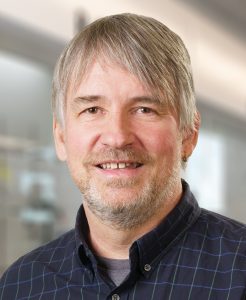 PROFESSOR DAVE JACKSON
PROFESSOR DAVE JACKSON
Cold Spring Harbor Laboratory, USA
FIELD OF RESEARCH: Plant Biology
RESEARCH PROJECT: Investigating how important signals move between plant cells to aid with development and growth
FUNDERS: US National Science Foundation (NSF), US Department of Agriculture
This material is based upon work supported by the National Science Foundation under Grant No. IOS-1930101. Any opinions, findings, and conclusions or recommendations expressed in this material are those of the author(s) and do not necessarily reflect the views of the National Science Foundation.
ABOUT PLANT BIOLOGY
Plant biology helps us understand the processes and mechanisms that underly some of the most important organisms on earth. Plants form the base of almost all food chains and without them, life as we know it would not exist. Understanding the details of how they work may help us discover new ways of solving some of our biggest problems such as climate change and hunger.
Scientists have been studying plants for a long time, but new technologies and disciplines have allowed scientists like Dave to dive deeper into their complexities.
WHAT DISCIPLINES DO PLANT BIOLOGISTS MAKE USE OF?
“Stem cell research and developmental biology are the major disciplines that we study, and they go together. Stem cells are the starting point of development, since they can multiply and then differentiate into all the different types of plant cells,” says Dave. His work also involves genetics, using mutations to understand which genes are involved in the developmental process. Combining these disciplines allows Dave and his team to understand the details of how plants work.
Reference
https://doi.org/10.33424/FUTURUM250
This animation shows KN1 mRNA (orange) moving through plant cytoplasm and being recruited to the plasmodesmata (blue).
PLASMODESMATA – tiny channels that connect adjacent plant cells to each other
CHAPERONE – a molecule that helps large molecules un-fold so that they can move through plasmodesmata
STEM CELLS – undifferentiated cells that have the ability to develop into all types of plant cells. They are crucial to the plant’s growth and development
mRNA – a type of nucleic acid that transmits the information from DNA into making proteins
RNA BINDING PROTEIN – proteins that bind to RNA molecules and help them, among other things, to move around and between cells
KNOTTED1 – a gene found in plants that gives stem cells their special functions and is vital for a plant’s growth and development
Communication between cells is a vital process for all multi-cellular organisms, and plants are no exception. In plants, this communication is particularly important during the development stage, when stem cells differentiate into all of the cells that an adult plant needs. Communication allows each cell to know which kind of cell it needs to become. Even when the plant is fully grown, its cells still need to be able to ‘talk’ to each other. They share information to co-ordinate the plant’s responses to changes in light and temperature, and to protect the plant from pathogens and disease.
One common form of cell-cell communication involves signal molecules, known as ligands, being released from a cell and binding to a receptor molecule on a different cell. Once the ligand has bound to the receptor, it changes shape and sets off a chain reaction in the receiver cell. This allows the receiver cell to react accordingly to the signal delivered by the ligand.
Beyond this indirect form of communication, plants also use proteins and RNA molecules to send signals directly to a receiver cell. This form of signalling is faster and more efficient as the signal molecules pass directly between cells using tiny pores called plasmodesmata. Professor Dave Jackson, based at Cold Spring Harbor Laboratory in New York, has recently discovered how a particularly important RNA signal molecule passes through these pores.
HOW DO SIGNALS PASS THROUGH PLASMODESMATA?
The plasmodesmata are so small that only tiny molecules like water or nutrients can pass through them easily. The size of the plasmodesmata can change throughout the plant’s life and this affects which molecules are able to pass through them. This dynamism is crucial to co-ordinating the plant’s development and can also help the plant protect itself from disease. If a cell is infected by a pathogen, the plasmodesmata can shrink, keeping the pathogen locked in and stopping it from spreading around the plant.
Large molecules, like proteins and RNA, need special help to guide them through the membrane. “Proteins are strings of amino acids, but in order to function, they need to be folded properly, like turning a ball of wool into a sweater,” explains Dave. This folding process increases their size and prevents them from moving through the plasmodesmata. Special chaperone molecules help these larger molecules to unfold and squeeze through the pores so that they can take their signals to other cells.
WHAT IS THE KNOTTED1 GENE?
Dave has been studying a gene called KNOTTED1 (KN1), which keeps plant stem cells in their undifferentiated, embryonic state, and is therefore crucial to the plant’s growth and development. To do its job, the KN1 gene needs to send signals between cells, which it does via an RNA signal molecule. Dave and his team have managed to identify a protein that helps to escort the KN1 RNA molecule through the plasmodesmata so that it can move between cells.
HOW DID THEY STUDY THE KNOTTED1 RNA MOLECULE?
Dave and his team used a genetics technique known as ‘screening’ to search for genes that are involved in the transport of the KNOTTED1 RNA signal molecule. They identified a gene that encodes an RNA binding protein, which they suspected to be the molecule they were looking for.
To take a closer look, Dave’s team used a technique called MS2 tagging. This technique makes use of a viral protein that binds to a specific RNA sequence. The team added this RNA sequence to the KNOTTED1 RNA molecules and expressed them in the plants being studied. The team then attached a fluorescent marker to the viral protein and introduced these into the plants as well, so that when they attached to the specific RNA sequences, each KNOTTED1 RNA molecule gained a fluorescent tag that the scientists could use to track their movements.
“Next, using a fancy microscope called a super-resolution confocal, we could watch the KNOTTED1 RNA moving around in the cell, and even saw it moving to the plasmodesmata,” says Dave. “That was a real breakthrough moment!” The team then used another technique called immunoprecipitation to identify that the RNA binding protein was attaching to the KNOTTED1 RNA signal molecule, confirming their suspicions.
WHY ARE RNA BINDING PROTEINS IMPORTANT?
RNA binding proteins control which RNA molecules move through the plasmodesmata. This means that they control which cells receive signals from the RNA molecules, which has a significant effect on the plant’s development. If the movement of RNA signal molecules was not regulated, the development of the plant’s cells would become confused and disordered, leading to a break-down of the whole system. “It would be like chopping up your favourite house plant in a blender, then hoping it would grow afterwards,” explains Dave.
HOW DO RNA BINDING PROTEINS WORK?
How RNA binding proteins bind to specific RNA molecules is not yet fully understood. Dave hypothesises that RNA molecules may have a specific code that allows the binding protein to attach to them. Alternatively, RNA molecules may have chemical modifications that help the binding proteins identify which molecules to attach to.
“We have some ideas… but it’s a little too early to discuss them,” says Dave. This is what makes his research so exciting. He and his team are conducting what is known as fundamental research. They are not aiming for any specific applications; their goal is simply to understand how things work. “This kind of research is really important, and you never know where it could lead,” says Dave. “For example, the discovery of CRISPR genome editing started with researchers trying to figure out why yogurt cultures went bad!”
WHAT IS NEXT?
Having identified the RNA binding protein that enables cell-to-cell transport of the KNOTTED1 RNA molecule, Dave’s next aim is to find out how the binding protein actually attaches to the KNOTTED1 RNA, and whether it binds to any other RNAs.
It is this continuing quest of discovery that motivates Dave and makes his work as a plant biologist so rewarding. We rely on plants for many of our basic needs including food, shelter and oxygen. Many plants, such as trees and grasses, are also great at capturing carbon and keeping it out of the atmosphere. As the global population continues to increase and the effects of the climate crisis start to impact farming, fundamental research in plant biology may provide the world with novel solutions to these pressing issues.
 PROFESSOR DAVE JACKSON
PROFESSOR DAVE JACKSON
Cold Spring Harbor Laboratory, USA
FIELD OF RESEARCH: Plant Biology
RESEARCH PROJECT: Investigating how important signals move between plant cells to aid with development and growth
FUNDERS: US National Science Foundation (NSF), US Department of Agriculture
This material is based upon work supported by the National Science Foundation under Grant No. IOS-1930101. Any opinions, findings, and conclusions or recommendations expressed in this material are those of the author(s) and do not necessarily reflect the views of the National Science Foundation.
Plant biology helps us understand the processes and mechanisms that underly some of the most important organisms on earth. Plants form the base of almost all food chains and without them, life as we know it would not exist. Understanding the details of how they work may help us discover new ways of solving some of our biggest problems such as climate change and hunger.
Scientists have been studying plants for a long time, but new technologies and disciplines have allowed scientists like Dave to dive deeper into their complexities.
WHAT DISCIPLINES DO PLANT BIOLOGISTS MAKE USE OF?
“Stem cell research and developmental biology are the major disciplines that we study, and they go together. Stem cells are the starting point of development, since they can multiply and then differentiate into all the different types of plant cells,” says Dave. His work also involves genetics, using mutations to understand which genes are involved in the developmental process. Combining these disciplines allows Dave and his team to understand the details of how plants work.
WHAT MAKES PLANT BIOLOGY REWARDING?
“When we make a new discovery, often it’s something that no one in the world has ever found before, so it’s exciting,” explains Dave. “It’s also fun to collaborate with scientists all around the world. We can’t do every kind of experiment in my lab, but when we have an interesting question, we may be able to find someone in a different lab who has perfected that technique, and we can work together to speed up the research.” Dave also spends a lot of time outdoors. “Being out in the corn field during summer and spending time with the plants is a real treat,” he says.
WHAT MAKES PLANT BIOLOGY DIFFICULT?
“Many of our experiments fail, sometimes because our ideas are wrong, but often because the techniques are extremely challenging and tricky to get to work,” explains Dave. Although their work is often challenging, if the experiments succeed, plant biologists could discover ground-breaking new science. These discoveries could help tackle big societal problems like climate change and sustainability.
EXPLORE A CAREER IN PLANT BIOLOGY
• The multi-disciplinary nature of plant biology means that you might find yourself working in a variety of locations. Some plant biologists, like Dave, spend a lot of time in laboratories using specialist equipment like microscopes and imaging software, whereas others are based in the field, conducting surveys and collecting data.
• The American Society for Plant Biology has lots of information and online talks and symposia that are free to attend: aspb.org
• In the UK, Open Plant is a great place to find information and has an ‘opportunities’ section that advertises online events: www.openplant.org
• Dave’s lab runs a research programme for high school seniors in the US (jacksonlab.labsites.cshl.edu/outreach). Students may also consider writing to professors whose work they find interesting to see if they can shadow a scientist in their labs.
• Dave says that the starting salary of a professor in plant biology is approximately $100,000. For more information about salaries linked to the field, visit: www.payscale.com/research/US/Job=Plant_Biologist/Salary
• Nowadays, science is very multidisciplinary so students can enter plant biology from several different pathways, even computer science or engineering.
• It is important to study science subjects, but students should study what they are passionate about.
• Programming skills are needed in all areas of science, so learn them as early as you can!
HOW DID DAVE BECOME A PLANT BIOLOGIST?
WHAT WERE YOUR INTERESTS WHEN YOU WERE YOUNGER?
As a child, I was always interested in figuring out how things work. My dad worked as an engineer fixing machines that made wallpaper, and we had a workshop at home and were always taking things to pieces.
HAVE YOU ALWAYS BEEN INTERESTED IN PLANTS?
I never thought about studying plants until I did a research project in my final year of undergraduate study at the University of Leeds. Before that, I always loved the outdoors and so I think it’s a good fit.
WHAT WAS YOUR PATH TO LEADING YOUR OWN LABORATORY?
My path was fairly meandering and not exactly planned out! After my undergraduate degree, I worked in a lab in France for a couple of years before returning to the UK to study for my PhD at the John Innes Institute in Norwich. I really came to love genetics because of its logicality and elegance.
I saw a conference talk from Professor Sarah Hake who had just found one of the very first genes that control plant development: KNOTTED1. I loved her talk, so I asked her if I could work with her, and she said yes! I spent five years in her lab in California before getting the position at Cold Spring Harbor. I was nervous about starting my own group and being responsible for managing other people and raising grant funding, but it’s been an incredible experience. CSHL is a very supportive and collaborative environment; people share ideas all the time.
WHAT ARE YOUR GREATEST CAREER ACHIEVEMENTS, SO FAR?
I think my greatest achievement is training people who have gone on to have their own independent research positions around the world. I am also proud of having expanded the high school research programme at CSHL – it has exposed a lot of young minds to the excitement of scientific research.
WHAT ARE YOUR AMBITIONS FOR THE FUTURE?
I still have a lot of scientific questions I want to solve. Making new discoveries opens up new questions and uncovers new methods. That is what is so exciting about science – it is constantly advancing, and with new tools we can address deeper questions. I also hope I will see some of our discoveries applied in agriculture, for example, to improve crop yields and sustainability.
WHAT DO YOU ENJOY DOING WHEN NOT WORKING?
I enjoy spending time with family, travelling and listening to live music, especially jazz. I also volunteer with a citizen science group called Genspace, in Brooklyn, New York, USA. It is a diverse group of people, from high school students to retirees, and mostly non-scientists, so we always have interesting discussions. Traditionally, science has been seen as a career for ageing white men like myself, but things are changing rapidly and people are beginning to really value diversity; everyone who is interested in science should be able to get involved.
Do you have a question for Dave?
Write it in the comments box below and Dave will get back to you. (Remember, researchers are very busy people, so you may have to wait a few days.)

